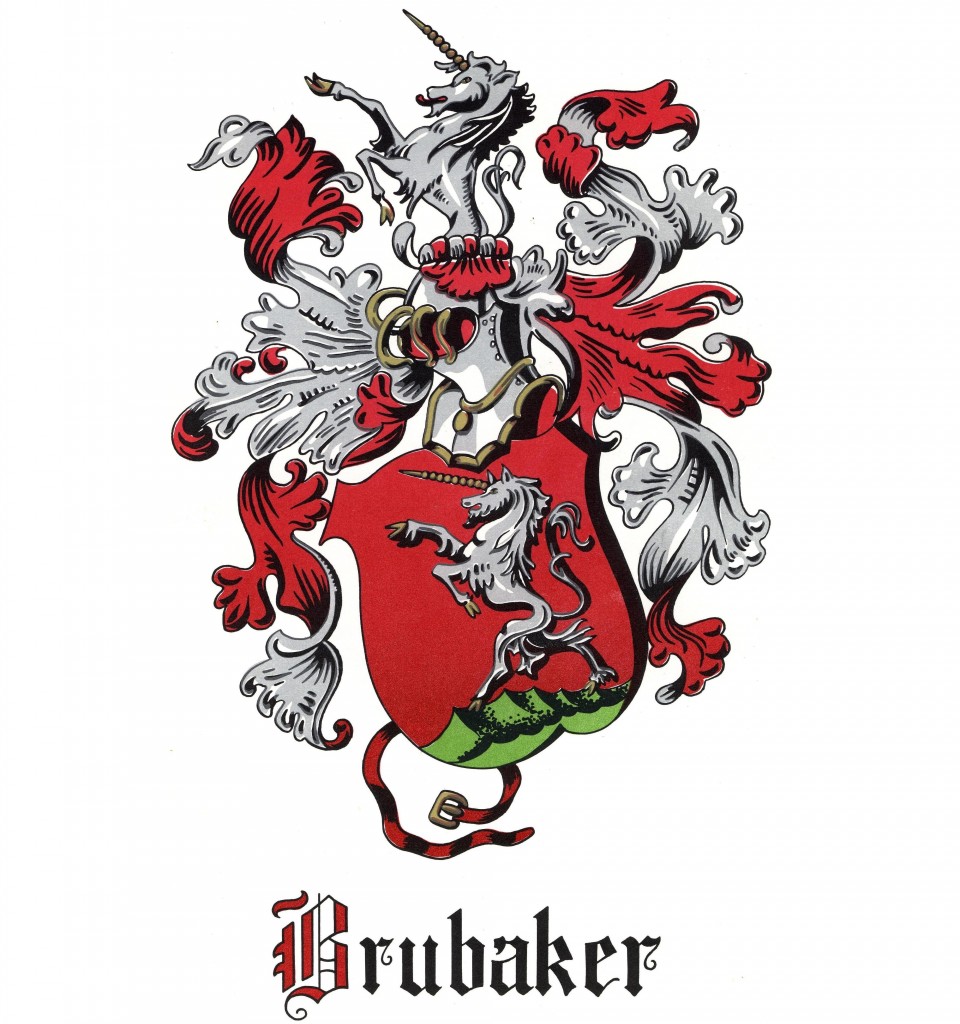Brubaker Coat of Arms
Dr. Albert P. Brubaker (1852-1943) of the “D” Family was able to obtain the Brubaker Coat of Arms while visiting in Switzerland sometime in the early 1900’s. It had as its title, “Familie Brubacher”.
A coat of Arms is an heraldic insignia originally embroidered on a tabard, or short coat, worn by knights over armor. They originated in medieval times, when they were used to distinguish individuals who were difficult to recognize when in full armor. The favorite emblem of the knight later became the adopted badge of the family.
The Brubaker Coat of Arms is marshaled and shows a blending of two or more coats of arms to form one composition. This composite is the result of families’ alliances. The upper part of the emblem came from the husband’s side of the house; the bottom portion came from the wife’s family. The outstanding insignia is the unicorn, which is a symbol of knightly honor, purity, protector of virtue, cure for all kinds of diseases, and an antidote for all poisons. Its selection was probably due to an honor bestowed upon a doctor of feudal armies. The unicorn at the top rests on a wreath of twisted silk; the number and color of twists show family connections and rank. The lower unicorn is in the same position or attitude–that is, “Rampant,” and means the same as the upper, except that it has a shield as a background and is standing on the mountain, thus representing lordship of the clan, or a chieftain.
The branches and leaves of acanthus both at the right and the left symbolize children or branches of the family. The pendant around the peer’s helmet is an indication of rank bestowed for service as a peer. The strop at the bottom was used like a belt to hold the coat in place over the armor.

